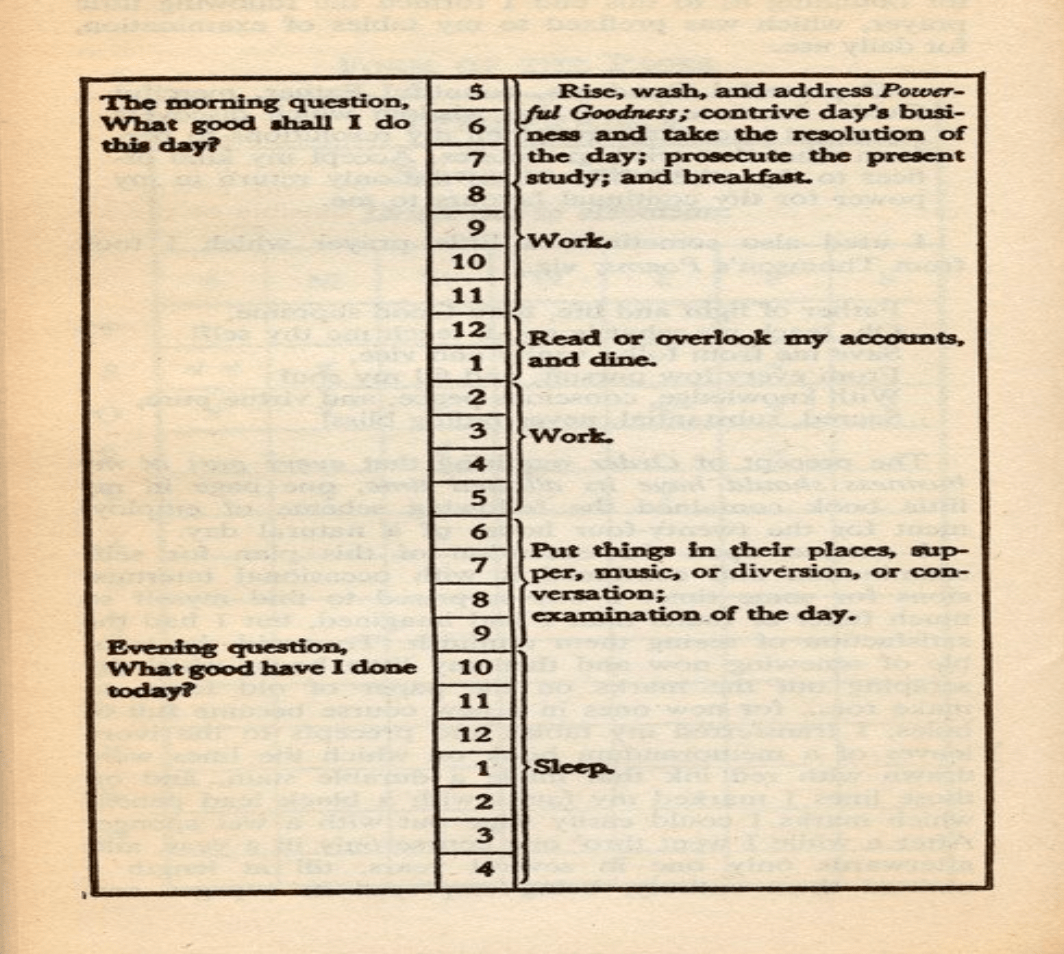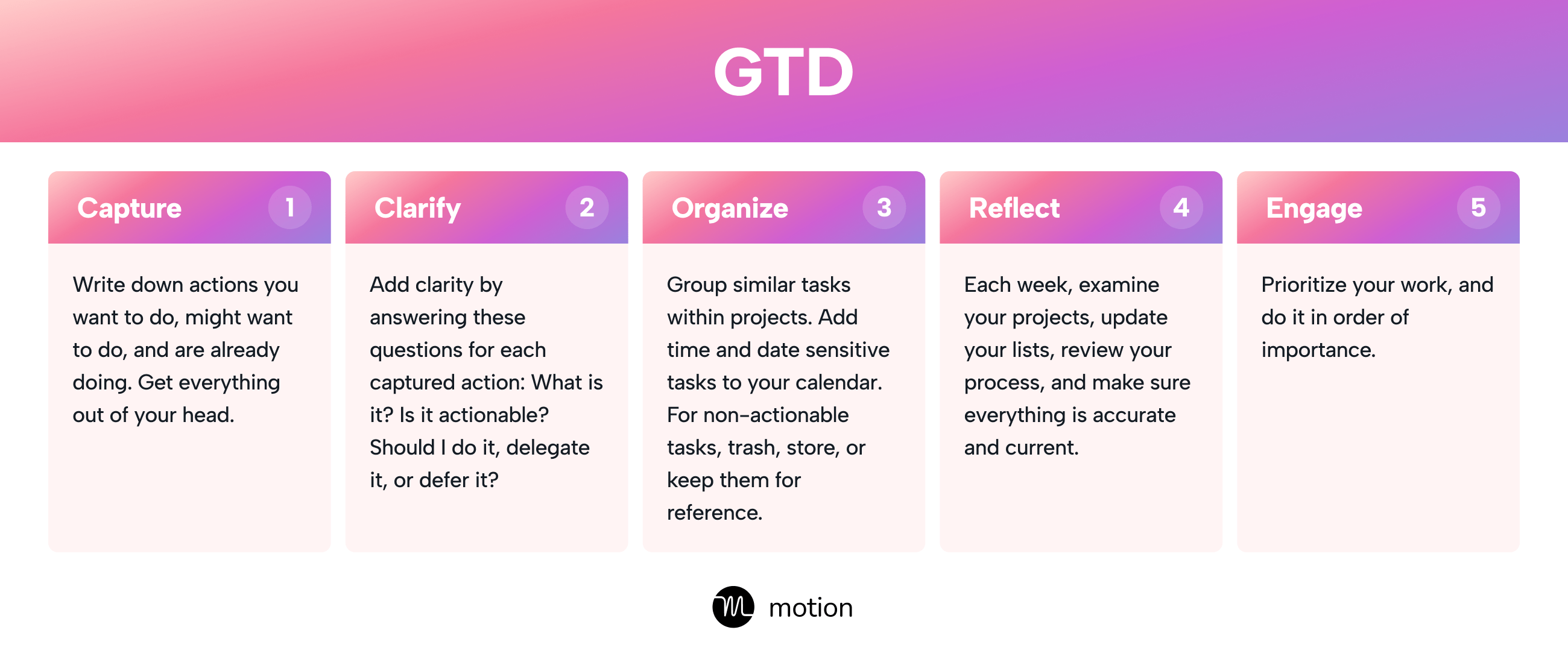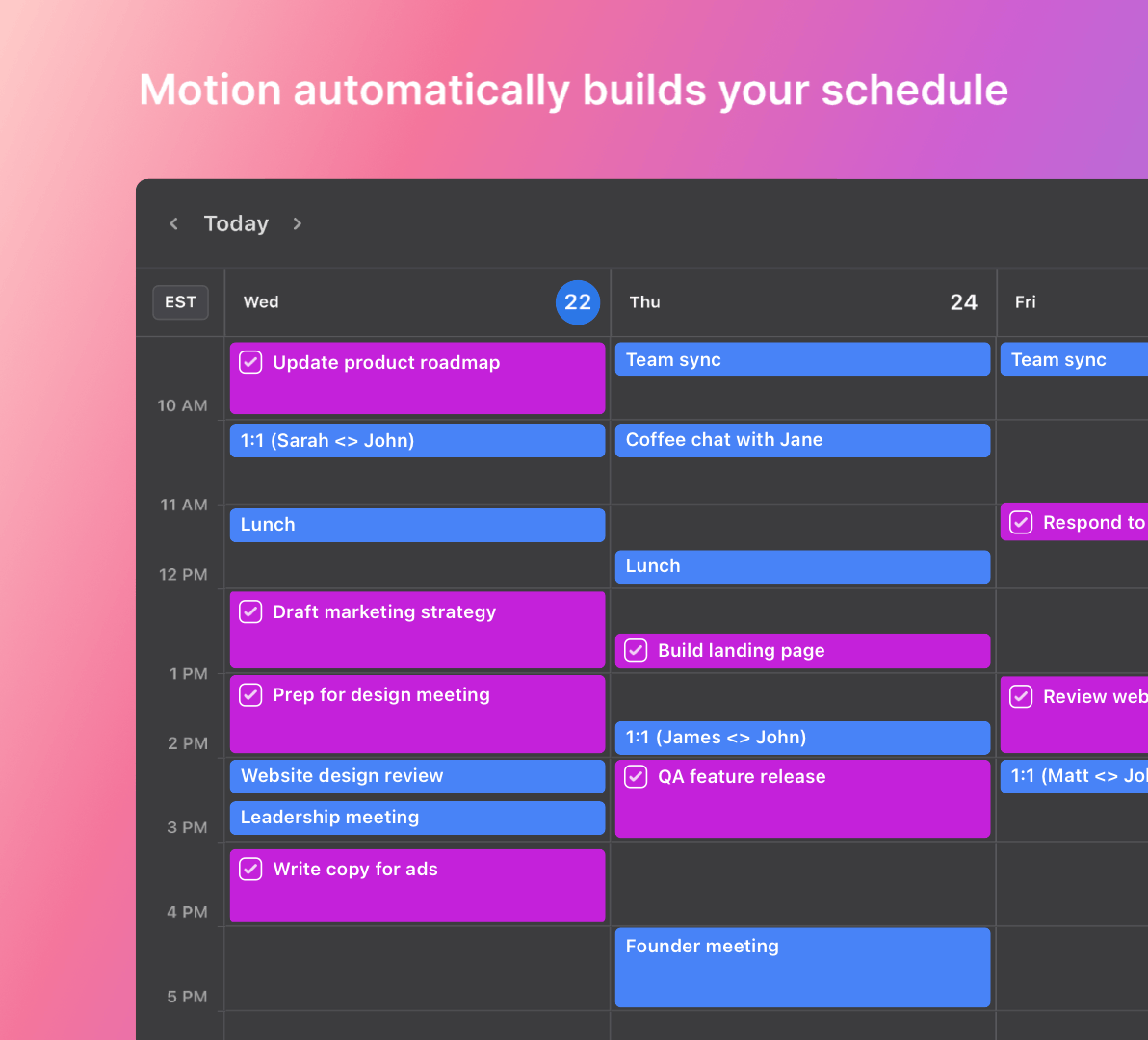Oh, how I love to-do lists. And how I hate them.
Throughout my career, I've used a to-do list of some kind.
(I'm not alone. 76% of Americans use a to-do list.)
I've probably spent hundreds of hours writing to-do lists.
My brain loves them. I feel better after writing a to-do list — less stressed, less overwhelmed, more productive — despite not having actually done any work.
Have you felt this too?
It turns out, science can explain this phenomenon. But more on that later ...
While to-do lists calmed me, they also frustrated me. Because inevitability, my to-do lists would always get longer. I'd never check everything off.
It turns out, I'm not alone in this either. 41% of to-do list tasks never get completed.
That's why I no longer use to-do lists. At least, not the old-fashioned pen-and-paper to-do list. Or, even the modernized to-do list app.
I've found a better method. One that allows me to accomplish more, feel less stressed, and be more organized.
But before getting into that, we need to take a step back and examine our old friend the to-do list.
Why do we love to-do lists so much? Yet, why do they fail us so often?
What is a to-do list?
A to-do list is a list of tasks that you ... well, need to do. 😂
People use to-do lists to organize their work, recall priorities, and increase productivity.
While you might think productivity-obsessed, 21st century tech founders invented to-do lists, they've actually been a staple for centuries.
In the 1700s, Benjamin Franklin shared a copy of his own to-do list in his journal, which he called a “scheme of employment.”

Today, to-do lists are still popular. Most people across the world use them — 76% of U.S citizens and 78% of Canadians have at least one to-do list.
Why do people love to-do lists?
A study from the Journal of Personality and Social Psychology might provide the answer.
It turns out, creating a plan to do a task actually lessens the intrusive, stressful thoughts associated with doing it.
For example, let's say you're sitting at your desk responding to emails. But you keep getting distracted and overwhelmed thinking about the long blog post you also need to write (ahem).
Well, this study found that creating a plan to write that blog post actually eliminates the intrusive, worried thoughts and allows you to resume responding to emails and doing other work — without those intrusive thoughts recurring.
Masicampo, one of the study's researchers, explains that people, on average, have about 15 ongoing goals and projects at a given time. That's a lot to remember, and unfinished goals burden our minds and demand our thoughts and attention.
"So the to-do list becomes quite appealing in that it helps us to offload some of that burden," says Masicampo. "When we write information down ..., we feel relieved from the need to hold onto it mentally."
That explains why we enjoy writing to-do lists, in all of their different forms. Now, let's look at a few ways people create their to-do lists.
3 common types of to-do lists
There are many different ways to make a to-do list. But here are three of the most common types:
Handwritten to-do lists
This is the most old-school way of making a to-do list. You simply take a piece of paper and write down all the tasks you need to do.
The advantage of this method is that it’s very simple and easy to get started. The downside is it can be hard to keep track of your to-do list if it’s not in a central location, and this process is very manual.
Bullet Journal to-do lists
The second way to make a to-do list is by using a bullet journal. Bullet journals are a popular method for organizing your life, and they can be used for making to-do lists as well.
The advantage of using a bullet journal is that it’s very flexible and can be customized to fit your needs. The downside is that it can take some time to set up and learn how to use, and again, this is a very manual process.
To-do lists apps
Of the three methods, to-do list apps are the most popular. This is likely because they offer a good balance of simplicity and features.
The best to-do list apps will allow you to track your tasks, set deadlines, and even share your to-do list with others.
Related: Stop Using To-Do List Apps Like Todoist, TickTick and Any.do. Here’s Why.
The problem with to-do lists: We don't actually do the work.
The to-do list might be a centuries-old, well-loved productivity tool, but it's not actually that effective at helping us get stuff done.
Controversial statement, I know.
Richard Branson, while a fan of to-do lists, points out the obvious. "To-do lists are only useful if you do the things on your list," he says.
The reality? Research shows people don't complete 41% of to-do list tasks.
While to-do lists alleviate mental burden and stress — as we found from Masicampo's research — the fact remains: They're not very effective.
In an interview, Masicampo explains why.
"If there is a downside to to-do lists, I think it is that they do not go far enough toward committing us to doing the work. To enter a task onto one’s to-do list is sometimes a way of saying, 'I’ll do this later.' In some of my unpublished work, I’ve seen that postponing tasks like this is not great for attaining our goals. It is all too easy to treat the to-do list like a menu where you’re constantly ordering the easiest-to-swallow tasks, while the more undesirable tasks fester and grow in number."
Yet, Masicampo still recommends to-do lists, with a caveat: We need to actually create a plan for doing the tasks — not just write them down.
"If every time we added an item to our to-do lists we also came up with a plan to specify what actions we need to take and when those actions need to be taken, that would be help minimize the odds of our to-do lists becoming graveyards of unfinished items," says Masicampo.
In The 7 Habits of Highly Effective People, author Stephen Covey supports this. He explains the importance of setting goals, creating to-do lists, separating large tasks into bite-sized tasks, and prioritizing work. To-do lists are just one step to productivity, not the final step.
With this approach to productivity in mind, let's look at 3 frameworks that apply it.
3 to-do list frameworks recommended by productivity professionals
Productivity gurus across the internet seem to all have their own “perfect” method for creating to-do lists.
There's too many to cover in one blog post, but here are three popular to-do list frameworks:
The Ivy Lee Method
The Ivy Lee Method is a popular to-do list method that was created by Ivy Lee, a productivity consultant who worked with some of the biggest companies in the early 1900s.
Lee’s method is deceptively simple. All you have to do is ...
- At the end of each workday, write down six tasks you need to do tomorrow.
- Prioritize those tasks in order of importance.
- The next day, start with the most important task and work on it until you finish it.
- Then, repeat with every task on your list.
- Do this every day.

What’s great about this method is that it forces you to think about what’s truly important and prioritize accordingly.
The drawback is that it can be hard to stick to just six tasks, especially if you have a lot on your plate.
Bonus: Grab our free to-do list template that uses the Ivy Lee Method below.

The Eisenhower Matrix
The Eisenhower Matrix is a to-do list method that was created by Dwight D. Eisenhower, the 34th President of the United States.
Eisenhower’s matrix is a bit more complicated than Lee’s method, but it can be very effective if used correctly.
Here’s how it works: you take all the tasks on your to-do list and put them into one of four quadrants:
- Quadrant 1: Urgent and important (tasks that need to be done right away)
- Quadrant 2: Important, but not urgent (tasks that are important, but can wait)
- Quadrant 3: Urgent, but not important (tasks that are urgent, but not important)
- Quadrant 4: Not urgent and not important (tasks that can wait and are not important)

Once you’ve categorized all of your tasks, you then prioritize them accordingly. The idea is that you should focus on the tasks in the first quadrant first, followed by the tasks in the second quadrant, and so on.
The advantage of this method is that it helps you to prioritize your tasks and focus on the most important ones first. The downside is that it can be time-consuming to manually categorize all of your tasks into quadrants.
Bonus: Download our free to-do list template that uses The Eisenhower Matrix for to-do lists below.

The GTD Method
The GTD method is a to-do list method that was created by David Allen, a productivity consultant.
Allen’s method is based on the idea of “mind like water” which means that your mind should be calm and clear so that you can focus on the task at hand.
Let’s go through the 5 steps of the GTD Method …
Step 1: Capture
Write down everything you need to do or that you need to make a decision about. This includes actions you want to do and ones you’re not sure if you want to do or not. It also includes in progress actions.
During this step, your goal is to get everything out of your head.
Step 2: Clarify
Once everything is written down, you then add clarity by answering these questions for each action, task, or thing:
- What is it?
- Is it actionable?
- Do it, delegate it, or defer it?
Step 3: Organize
Organize your tasks by:
- grouping them within projects with relevant info for each task
- adding time-specific and date-specific items to your calendar
- And building a list of your next actions.
For non-actionable tasks, either trash them, store them for later, or keep them as reference info.
Step 4: Reflect
On a weekly basis, examine all of your projects, update your lists, review your process, and make sure everything is accurate and current.
Step 5: Engage
Do your tasks, work, and action items in order of importance. During this step, ensure you’re making good decisions on prioritization of work.
The advantage of the GTD method is that it helps you to declutter your mind and focus on the task at hand. The downside is that it can be time-consuming to write down everything that’s on your mind.

While these 3 frameworks are useful, there is actually a fourth productivity approach that's even more effective — and it can triple your productivity.
A productivity strategy that can 3x your productivity
Time blocking.
What is time blocking?
Time blocking is a productivity technique that involves scheduling specific blocks of time for specific tasks. The goal is to minimize distractions and maximize focus by batching similar tasks together.
For example, if you're a writer, you might block off two hours in the morning to write an article, followed by an hour break for lunch, then another two hours in the afternoon to edit the article.

Time blocking helps you to stay focused on a task and get it done more quickly.
Productivity experts agree. Here's what Cal Newport, author of Deep Work, says about it:
“Sometimes people ask why I bother with such a detailed level of planning. My answer is simple: it generates a massive amount of productivity. A 40 hour time-blocked work week, I estimate, produces the same amount of output as a 60+ hour work week pursued without structure.”
For Clear, time blocking increases productivity by 50%.
Other studies show that it can triple your productivity.
Why does time blocking work?
Time blocking forces you to create a detailed plan for actually completing your to-do list.
When you time block, you must:
- Write down your tasks.
- Prioritize those tasks by deadline or importance
- Determine how long it'll take to do each task
- Set aside (or block) time on your calendar to actually do them.
This last part is key. When you actually begin to block times on your calendar, you'll quickly realize whether or not you can complete everything on your list. Often, we overestimate what we can do. Time blocking prevents this. It forces us to be realistic.
And you'll also reserve time for each task.
On top of that, time blocking ensures you understand your priorities each moment of the day and keeps you focused on those priorities. No more wondering, "What am I supposed to do next?"
Related: Why Traditional Time Blocking Methods Don’t Work
"Plans are nothing; planning is everything."
– Dwight D. Eisenhower
The curveball: A massive time investment and changing priorities
Now, there's an obvious reason why most people don't time block, despite it being so effective.
Time blocking every moment of each day is insanely time consuming.
It's a multi-step process that includes:
- Creating a to-do list
- Prioritizing your to-do list
- Adding due dates
- Estimating how long each task will take
- Blocking time on your calendar for each task
And once you've invested all this time, there's another issue.
What if your priorities change?
Work fires, last-minute meeting invites from your boss, family emergencies ...
There are dozens of legitimate reasons for changing priorities.
So what's a person to do?
Well, for me and 20,000+ other professionals, Motion is the solution.
The better way to plan your day: Motion
Motion is a project and time management platform that applies every productivity strategy we've talked about today — while eliminating hours of planning time. It gives you one place to plan projects, create to-do lists, prioritize to-do lists, and time block on your calendar.
Knowledge workers still spend 58% of their day coordinating work, instead of doing work.
Motion dramatically decreases the time it takes to plan and coordinate work — because, using artificial intelligence, it:
- automatically plans your days
- automatically time blocks on your calendar
- and automatically shifts tasks as your priorities change.
Let's look at each of these ...
Project and task planning and prioritization with Motion
In Motion, you can create and organize entire projects, like this example project I just created:

For each task in my project, I can add deadlines, priorities, estimated task duration, blockers, labels, and timeframes/days I plan to complete the task:

This is where things get really cool ...
Daily to-do lists and time blocking with Motion
Motion takes my projects and tasks and builds a schedule to finish everything. It even blocks time on my calendar to do each task at the right time.

Meeting scheduling with Motion
You'll notice in the GIF above that Motion also moves and reschedules meetings.
Of course, it'll only reschedule meetings if you tell Motion a task is more urgent than a meeting. So high-priority meetings will never accidently get moved.
Motion even gives you the ability to create custom meeting booking pages to easily schedule meetings with other people:

Motion combines project management, to-do lists, planning, time blocking, and productivity strategies into one tool in one place.
And it automates a lot of the tedious, manual work that goes with effective planning — like time blocking.
That's why 20,000+ professionals (me included) use it to save 2 hours each day! (That's over 30.3 days each year.)
The to-do list is dead. Long live Motion!
Try Motion free for 7 days
If you'd like to give Motion a try, grab a 7-day free trial here.





